MiPSMART -Smart Grid Simulation
MiPSMART™ – is a web based Smart Grid Simulation environment. The product is the only one of the kind that envisages the application of the smart grid concepts in real time. It is designed for the smart grid enthusiasts as a tool to understand the concepts, possibilities and applications of Smart Grid. Though it is aimed as a learning tool, the product design has been carried out in a fashion to accommodate the real time applications. Thus making a useful tool for even the distribution companies to keep track of the consumer usage, and perform various other actions like encouraging them to reduce the usage or in other terms to effective manage their loads.
- Power producers to publish the day-ahead schedule and the costing.
- Consumer who can keep track of his/her usage, receive information on tariff’s/incentives and effectively manage the loads.
- Service provider who manages the consumers, track their usage and manage the demand.
- Consumer who can keep track of his/her usage, receive information on tariff’s/incentives and effectively manage the loads.
MiHTC™
- Project
Hydro-Thermal Co-ordination
- Client
Karnataka Power Transmission Corporation Ltd (KPTCL)
- Location
Karnataka, INDIA

Case Study
The System
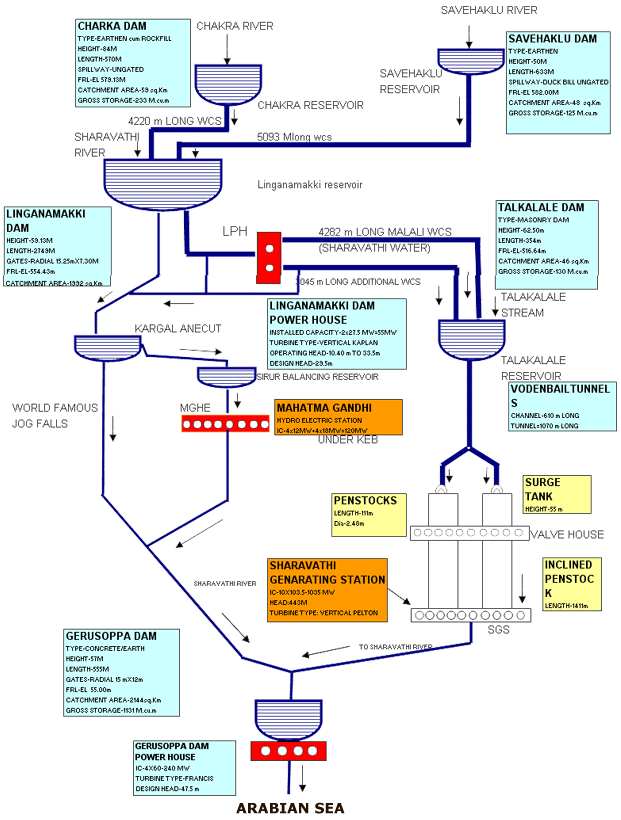
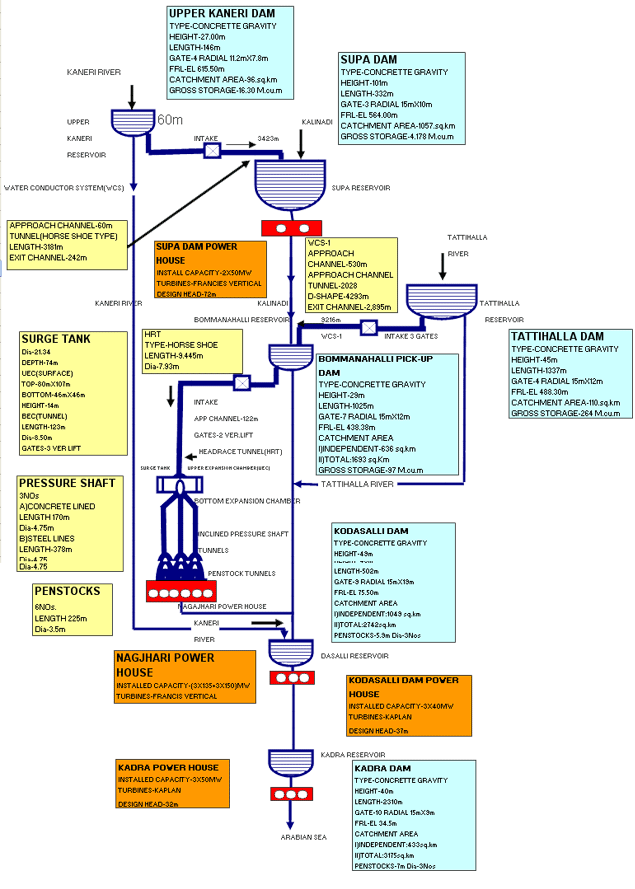
Connection of Reservoirs and Power Plants
| Power Plants | Production Capacity |
|---|---|
| Hydroelectric Plants | 3,657 MW |
| Thermal Power | 4,520 MW |
| Liquid and Gas-Based Plants | 237 MW |
| Renewable Energy Sources | 3,228 MW |
| Captive Power Plants | Remaining Capacity |
Most power generation facilities are located in remote areas across the state. Hydro power accounts for about 33% of Karnataka’s total capacity. Major hydroelectric sources include:
| Hydro Power Plant | Production Capacity |
|---|---|
| Sharavathi River | 1,470 MW |
| Kali River | 1,255 MW |
| Varahi River | 469 MW |
| Almatti Dam on the Krishna River | 290 MW |
Karnataka’s transmission system is generally limited by stability and must operate within security constraints. The network includes:
- 39,300 circuit kilometres of transmission lines.
- 1,315 substations.
- An HVDC link of 1,450 km between Kolar and Talcher, capable of transferring 2,500 MW.
Process Flow
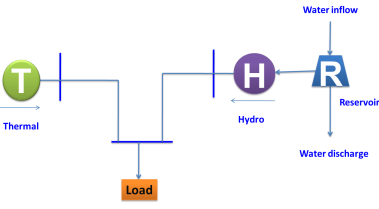
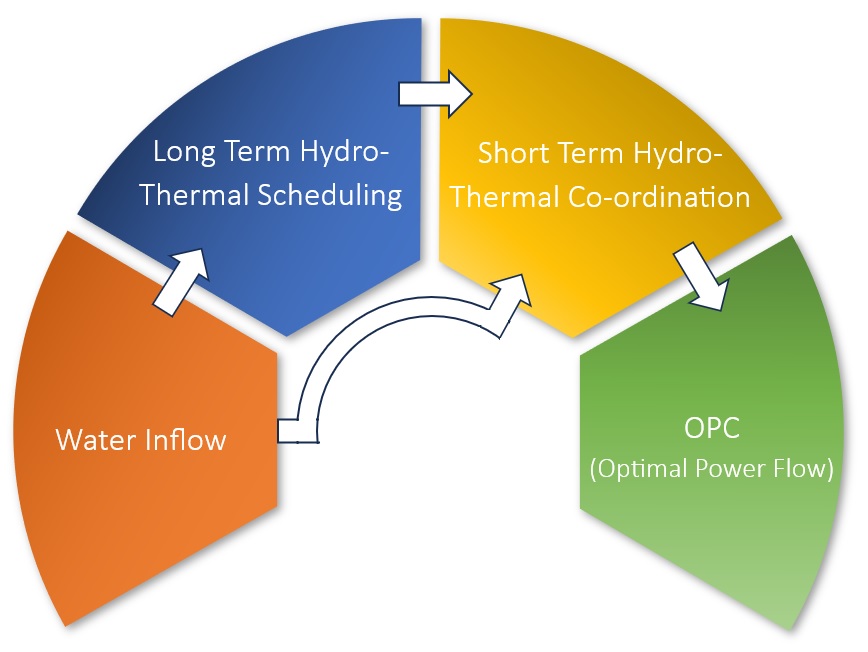
Challenge
In the past, long-term generation planning in Karnataka was based on intuitive analysis. The System Control Centre prepared generation schedules using past experience, which worked well under similar operating conditions. However, when input conditions or assumptions changed, the system became constrained and often operated in non-optimal ways.
As the power sector evolved from a centralized model to a more decentralized setup, Karnataka Power Transmission Corporation Ltd (KPTCL) recognized the importance of forecasting future water inflows. Accurate forecasts became essential for preparing both long-term and short-term schedules. This approach helps optimize water usage, reduce thermal generation costs, and ensure reliable system operation, while staying within defined constraints.
Solution
M/s ABB was the turnkey solution provider for KPTCL’s SCADA/EMS implementation. As part of the project, a Hydro-Thermal Coordination (HTC) software package was included. M/s ABB outsourced the supply and integration of the HTC system with its EMS, which included:
- Water inflow forecasting (MiWiF).
- Long-term Hydro-thermal scheduling (MiLTHTS).
- Short-term hydro-thermal scheduling (MiSTHTS) with unit commitment and economic dispatch.
- Optimal power flow.
The HTC package (MiEMS/HTC™) was supplied and installed by PRDC. Developed using advanced technologies, this system helps operators and water resource teams generate efficient long-term and short-term hydro-thermal schedules. It aims to optimize the use of hydro and generation resources while reducing the cost of thermal generation.
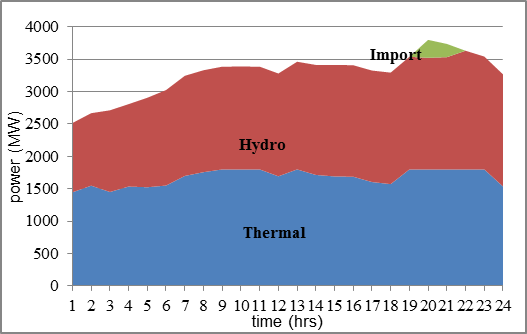
MiWiF™
Accurate and dependable stream flow forecasts are essential for effective reservoir operation, supporting both flood control and optimal hydropower generation. MiWiF™ plays a key role in this by modelling river connectivity and water routing as part of a water resource system.
MiWiF™ forecasts natural inflows to lakes, reservoirs, and river reaches using historical data and external factors. As inflow forecasting is a continuous and critical process for hydro-thermal scheduling, MiWiF™ provides detailed weekly and hourly inflow predictions for both long-term (MiLTHTS) and short-term (MiSTHTS) planning. These forecasts are based on real-time hydraulic conditions and defined thermal and hydro constraints.
To handle the uncertainty of weather conditions, MiWiF™ features an advanced, dynamic closed-loop system that continuously updates forecasts using real-time inflow data and external inputs to ensure high accuracy.
Long-term hydro scheduling focuses on optimizing water use by considering both current and future availability, as well as electricity and irrigation demands. Short-term hydro-thermal coordination uses data from both short-term inflow and long-term hydro-scheduling to determine water availability and usage limits.
Using this information, MiHTC integrates user-defined constraints into a single solution that meets present and future demand. Both MiLTHTS and MiHTC use Mixed Integer Linear Programming to handle user-defined constraints. MiHTC applies these constraints while generating optimized hydro and thermal unit schedules.


| Hydro Constraints | Thermal Constraints |
|---|---|
| Water balance equation based on connectivity of reservoirs & plants | Thermal Cost functions |
| Irrigation constraints | Fuel constraints |
| Travel time delay for discharges and spillages | Unit Minimum and maximum generation |
| Minimum and maximum storage volumes | Unit startup costs (Hot, Warm and Cold state) |
| Minimum and maximum discharge limits | Unit startup times (Hot, Warm and Cold state) |
| Minimum and maximum power capacity | Unit Ramp Up and Ramp Down rates |
| Unit power production for constant head operating plants | Unit commitment decisions |
| Unit power production for variable head operating plants | Unit start up and shut down decisions |
| Hydro unit commitment decisions | Unit Minimum Down and Minimum Up time |
| Hydro unit start up and shut down decisions | Forced units |
| Hydro unit startup costs if any | Must run units |
| Minimum Up and Minimum Down times | Present Unit status |
| Ramp Up and Ramp Down rates | Unit maintenance |
| Maximum Number of Start Ups during study period and during day | Crew Constraints |
| Unit Spinning reserve contribution | Unit Spinning reserve contribution |
| Crew constraints | Max number of Start Ups during study period & during day |
Perceived Benefits
With the implementation of the water inflow (MiWiF™) and hydro scheduling (MiLTHTS and MiSTHTS), system shows significant improvement in its ability to forecast future inflows and hydro and thermal schedules. This has direct and positive impact on the overall hydro-thermal coordination. KPTCL should be now able to plan operations over long-term and arrive at detailed generation schedule in the short-term perspective to meet physical and environmental constraints, maximize revenues and control financial risks inherent in market-based operation.
With the integration of MiWiF™ for inflow forecasting and MiLTHTS/MiSTHTS for hydro scheduling, the system has significantly improved its ability to predict future water inflows and optimize both hydro and thermal generation schedules. This enhancement directly strengthens overall hydro-thermal coordination.
KPTCL can now plan long-term operations more effectively and create detailed short-term generation schedules. This helps meet operational and environmental constraints, maximize revenue, and manage financial risks in a market-driven environment.

MiPHSM™
MiPHSM™ is optimal hourly scheduling (unit commitment & dispatch) of generation resources over the next day or week is an important function for power system operation. The main objective of Hydro System Model (HSM) is to determine the most economical way of hourly production schedule of the hydro resources considering demand side options, water and unit availability over the next day or week.
The objective function is subjected to a set of system operation constraints such as: hydro constraints like water balance in cascaded reservoirs including time delays between upstream releases and downstream arrivals, irrigation constraints, ramp constraints etc.
The optimal solution of hydro system model is of great technical as well as commercial interest. The main complexity in solving this type of problem involves the modelling of nonlinearities, integer decisions, and coupling constraints for different time stages.
MiPDATool™ – is a Disturbance Analysis Tool package
MiPDATool™ – is a Disturbance Analysis Tool package. It is a user friendly windows based application that can be used by companies engaged in the business of power distribution. MiPDATool™ is an offline tool which is capable of analyzing both COMTRADE and PMU files. Transmission system sees several events in terms of generation variation, change in load and switching equipment state and fault.
Proper operation of system under such scenario is very much important for high availability of electrical systems. The early detection these events and classify it them to normal and abnormal system behaviour by harnessing the IT will help to reduce loss and outage that occurs in transmission system.
MiDGIS™ – is a GIS based Distribution Analysis and Planning package
MiDGIS™ – is a GIS based Distribution Analysis and Planning package. It is a user friendly windows based application that can be used by companies engaged in the business of power distribution. MiDGIS™ is available as a Desktop – Client Server model. Core engines like load flow, short circuit analysis are very robust, field proven and time tested for decades. Modelling the systems and performing various analysis is simplified. Once required data is collected, it can be modelled and analysed within minutes. MiDGIS™ brings network analysis and geo spatial / location information together. With location information utility is empowered with visuals, utility will be well equipped to supply quality power, safety and improved reliability with good protection system and contingency management, well managed outages, compliance, reduction of loss, cut costs and more.
MiPTAP™-Transmission System Analysis and Planning
MiPTAP™ is a windows-based Transmission System Analysis and Planning package. Its user friendly applications allow simulation and studies for planning and operation of power transmission. Accurate modelling of the entire transmission system and performing various system studies is offered in a simplified form. Core modules like Load Flow Analysis and Fault Studies, Distance Relay Coordination, Transient. Stability Analysis, Voltage Stability Analysis.
Dynamic Stability Analysis, Sub Synchronous Resonance, Harmonic Analysis, Electro Magnetic Transient Analysis, Open Access Feasibility Analysis, Distribution System Reliability Indices Bus Reduction are very robust, field proven and time tested for decades. MiPTAP™ provides the user with the options of modelling the Transmission system.
MiPDAP™ – MiPower – Distribution System Analysis and Planning
MiPDAP™ is a windows-based Distribution System Analysis and Planning package. Its user friendly applications allow simulation and studies for planning and operation of power distribution. Accurate modelling of the entire distribution system and performing various system studies is offered in a simplified form with options of automatic network generation from GPS recordings.
Core modules like Load Flow Analysis and Fault Studies are very robust, field proven and time tested for decades. MiPDAP™ provides the user with the options of modelling the distribution system from the substation till the end consumers covering all voltage levels, network mapping with consumer indexing for billing and Feeder-wise & DTC-wise loss assessment for AT&C loss calculations and energy accounting.
